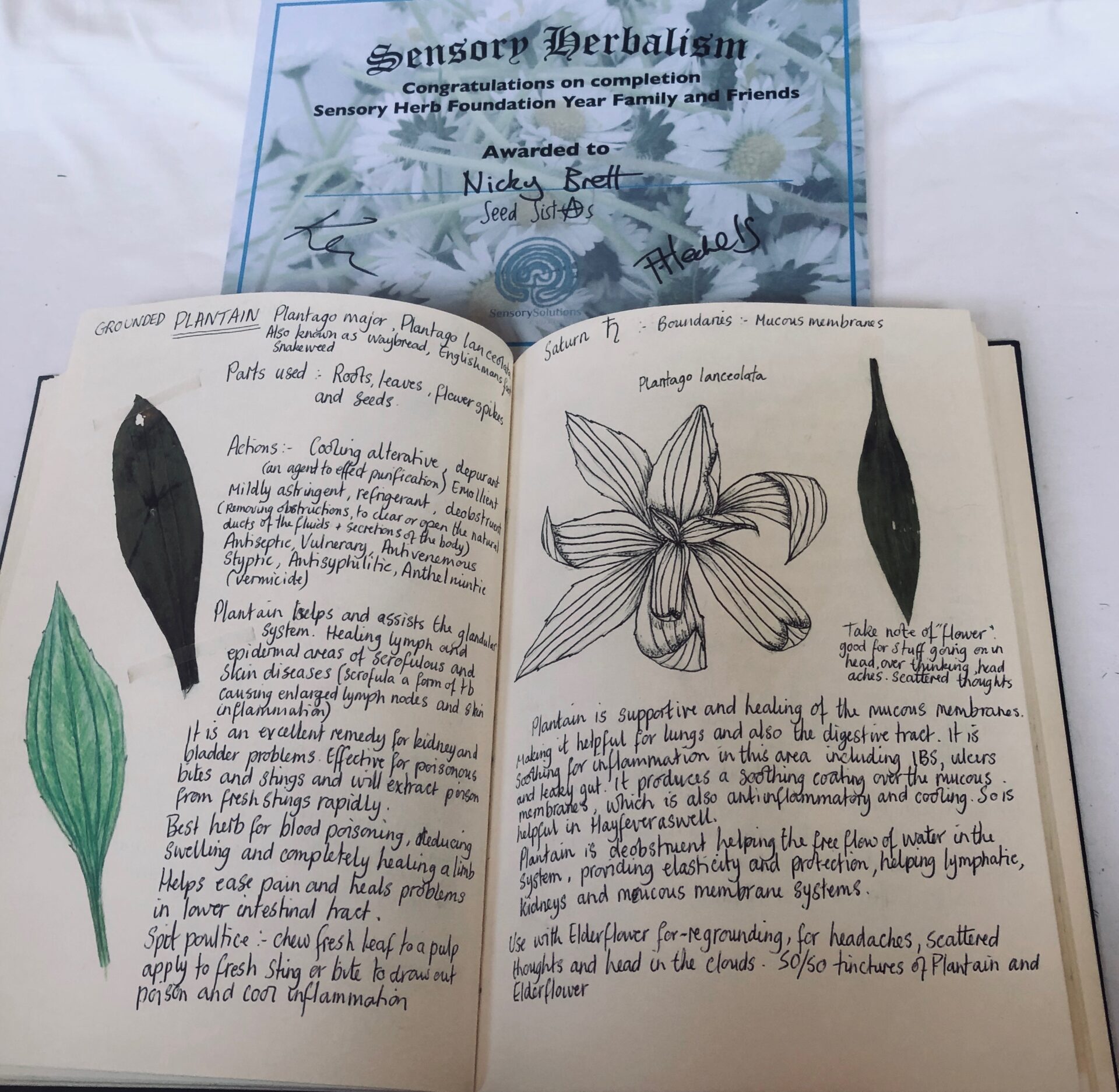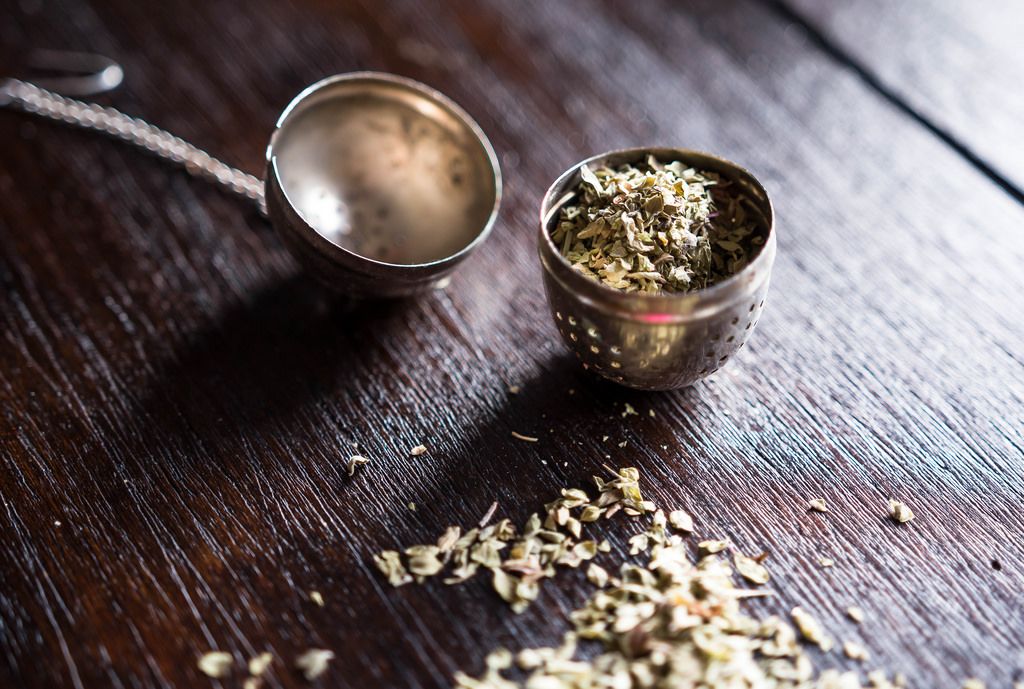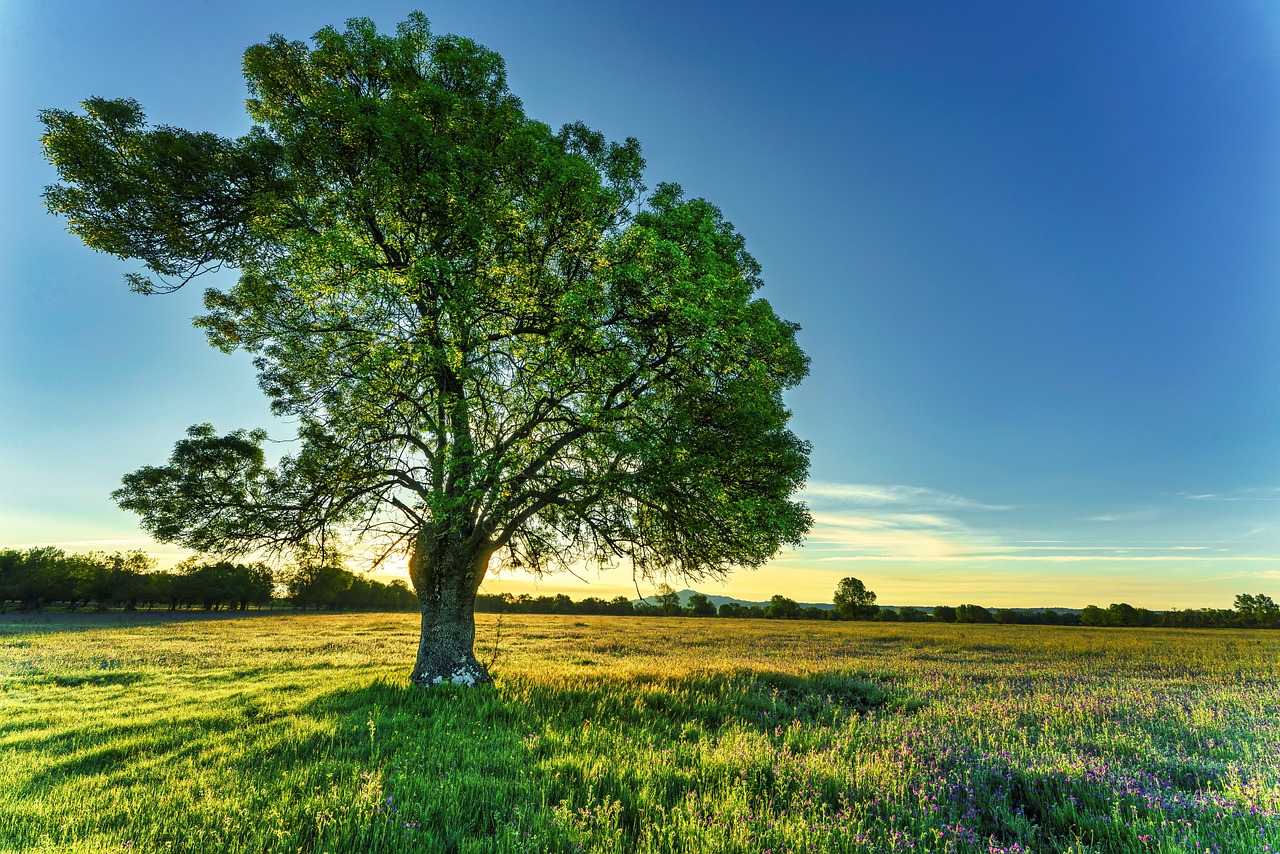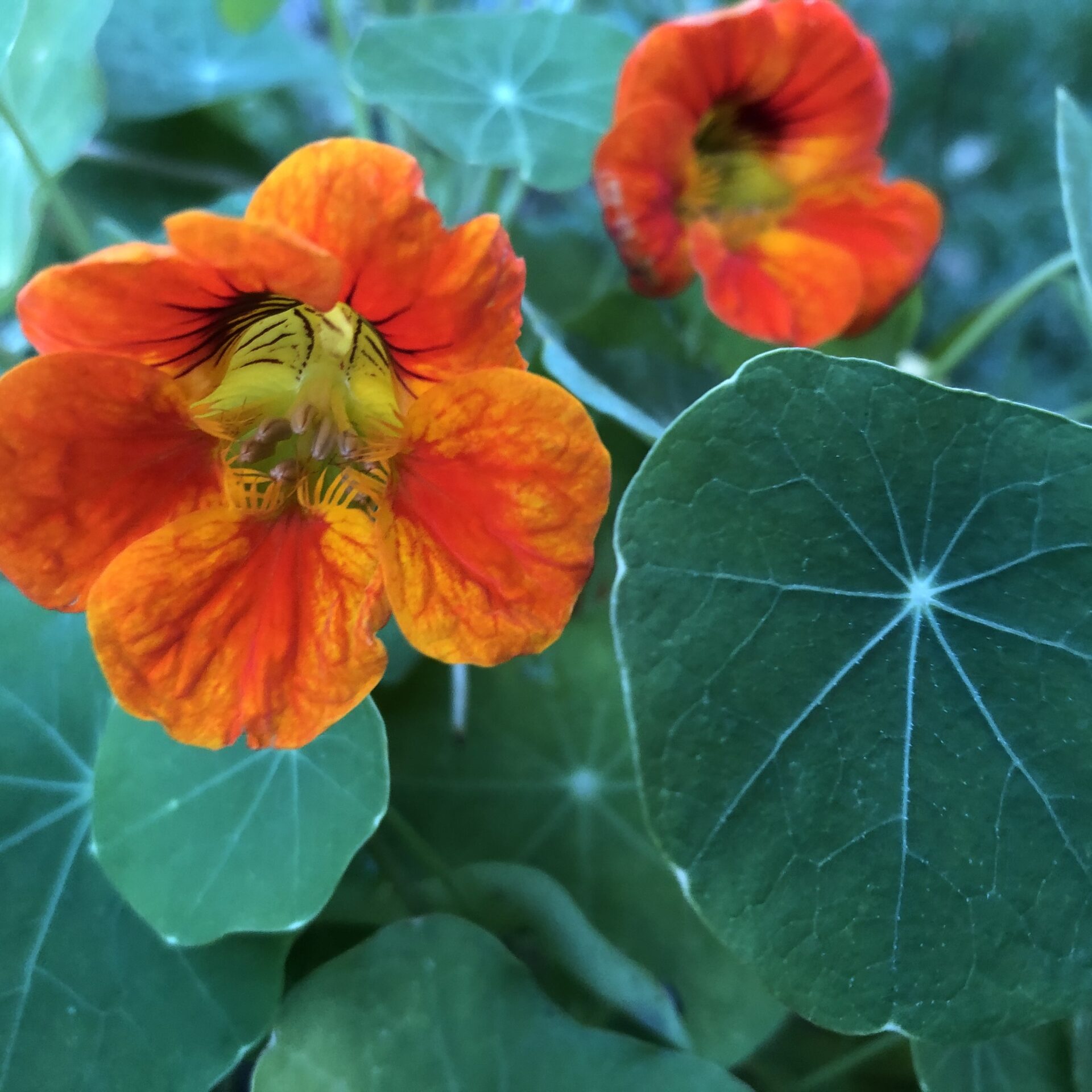As herbalists, it’s imperative that you have keen skills of identification of plants. The variety of forms, hues and colours that plants take are truly incredible to behold. Many folk say to us that when they look at the hedgerow, it just looks like a load of green. We soon realised that the way to support people so that they take notice of the subtleties that nature has to offer, is to learn in the way that we have developed over the years, through herbal observational drawing.
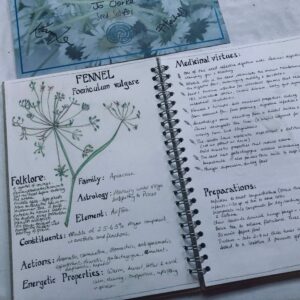 Many moons ago, we started to draw plants as a way to develop and hone our skills of identification, recognising botanical clues that differentiate one herb from another. We have cultivated this practice, and shared our love of connecting in this way with hundreds of students.
Many moons ago, we started to draw plants as a way to develop and hone our skills of identification, recognising botanical clues that differentiate one herb from another. We have cultivated this practice, and shared our love of connecting in this way with hundreds of students.
It is amazing what you notice when you take the time to slow down and reflect with some pens and paper. The in-depth study of plants, through our sense of sight, provides valuable lessons in nature discover. You can discern how fluid travels through the leaves through the venous structure or how a flower may be structured to provide efficient reproduction. You can get up close and personal with all of the plant parts.
A large part of Sensory Herbalism (our very own developed set of techniques to get connected with herbs), is based around observational drawings of plants. Every time we work with a new group of herbal students, there are folk who feel a sense of fear that they cannot draw (a hangover left from schooling days). It is a travesty how often we hear this. We like to imagine a world where we are not limited by feeling judged for what we produce. The overall aim of this exercise is to become more connected to the herbs and truly embed their identification. There is no need to be concerned about outcome.
Time and time again we witness, wonderful art from everyone each expression of creativity is unique, and a sense of achievement is always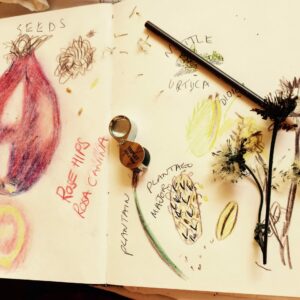 palpable when folk overcome their fears of failure and apply pen to paper. Each individual is gifted profound learning through their art observations, and the gentle letting go of their fears of not being good enough at drawing, it’s profound. When we still ourselves to truly observe a plant, its’ form, colour and even its’ subtle movements, we discover new knowledge. If you draw a plant in detail, you will never again mistake that plant whilst out on a walk, you will really and truly meet the plant on a subtle and insightful level thus beginning the road to becoming buddies!
palpable when folk overcome their fears of failure and apply pen to paper. Each individual is gifted profound learning through their art observations, and the gentle letting go of their fears of not being good enough at drawing, it’s profound. When we still ourselves to truly observe a plant, its’ form, colour and even its’ subtle movements, we discover new knowledge. If you draw a plant in detail, you will never again mistake that plant whilst out on a walk, you will really and truly meet the plant on a subtle and insightful level thus beginning the road to becoming buddies!
One of our favourite things as herb lovers, is the sense of never feeling alone whilst out on our wanders. There are a host of mates growing at our feet that we have developed a warm and cherished rapport with. We find ourselves talking to them and feeling held and cared for by them. They bring hope in the spring, joy in the summer, abundance in the autumn, and a sense of stillness and calm in the winter months.
Before we had the invention of the camera and photography, botanical illustration was the only way of visually recording and discovering the multitude of forms of plant life. Artists and illustrators have always shared the beauty of botany with the world. The job requires great artistic skill, attention to fine detail, and technical horticultural knowledge.
Botanical Illustration
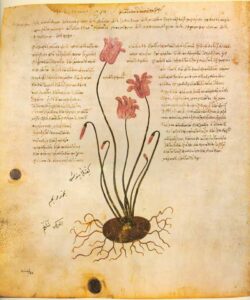 In traditional botanical illustration, the emphasis is on the scientific record and botanical accuracy to enable identification of a plant. These are incredible artworks depicting the whole growing cycle of the plants, complete with roots, bulbs, flowers and seeds. There are stunning examples of these beautiful pieces of art that can be found at various botanical gardens around the globe.
In traditional botanical illustration, the emphasis is on the scientific record and botanical accuracy to enable identification of a plant. These are incredible artworks depicting the whole growing cycle of the plants, complete with roots, bulbs, flowers and seeds. There are stunning examples of these beautiful pieces of art that can be found at various botanical gardens around the globe.
Physicians, pharmacists, botanical scientists, and gardeners of old, all relied on these illustrations for identification, analysis, and classification. They are a record of plants growing all over the world and of the journeys taken by botanists on their plant hunting missions.
Illustrated herbals provide some of the earliest records of drawings and paintings of plants. Some of the earliest published plant illustrations can be found in De Materia medica, Latin for ‘On Medical Material’ a text from the first century written by Dioscorides (c. 40-90 CE), a Greek medical botanist and physician who served in the Roman army. This Epic manuscript describes approximately 600 plants for more than 1,000 traditional medicines.
Get drawing – Nurture your creativity
Putting pen to paper, as well as boosting your mood by being super uplifting is also extremely calming, and indeed a meditative pursuit aiding you to remember each herb individual characteristics. No two plant parts are ever the same; each flower, stem, leave and root have their very own quirks. You can go for precise lines, or any way of creatively expressing the plant. Some use negative colour, often colouring the background, but leaving the plant mainly blank, some use colour, some pen or pencil only.
Beginning to draw
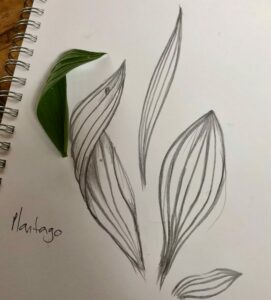 If you feel any fears, any judgement on your own artistic skills, a good way to begin drawing is to doodle. When we doodle, it increases your visual literacy and also helps you process ideas. Just start by experimenting with drawing whatever comes to mind, even if it is circles or squares, let your pencil or pen dance across a page without concern for what you are producing. It also overcomes the fear of tainting that first white page of an art book! Something we also saw in the early years of teaching; that folks would still have a pristine art book at the end of the year with sketches in their note book! We started to insist that the students opened their art books and drew straight into them to overcome this very real and unpredictable issue.
If you feel any fears, any judgement on your own artistic skills, a good way to begin drawing is to doodle. When we doodle, it increases your visual literacy and also helps you process ideas. Just start by experimenting with drawing whatever comes to mind, even if it is circles or squares, let your pencil or pen dance across a page without concern for what you are producing. It also overcomes the fear of tainting that first white page of an art book! Something we also saw in the early years of teaching; that folks would still have a pristine art book at the end of the year with sketches in their note book! We started to insist that the students opened their art books and drew straight into them to overcome this very real and unpredictable issue.
As you draw a plant in detail, you enter into an intimate relationship by devoting the time to seeing your herbs through the lens of your drawing practice. That relationship and connection only grows and develops. You will really meet the plant on a subtle and insightful level thus beginning the process of truly making a lasting friendship with the plant.
Hints and Tips for drawing
Take your time and study the plant, and think about how best to represent it before you start to draw - art is about thinking as well as doing. It’s not uncommon for studies and preparation to take a long time, be prepared to take as long as it takes to do justice to the subject material.
- Draw what you can actually see, not what you think you can see.
- Develop a good understanding of the details before you start e.g. buy a magnifying glass; use dissections; learn how to use the macro lens on your phone camera.
- Study how leaves and flowers and fruits overlap one another before you start to draw and paint.
- Look at how the leaves grow off the stem, in clusters or pairs; where the flowers meet the stem, and if they grow alone or with others.
- Try not to be worried or scared of making mistakes.
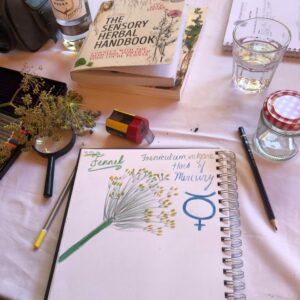 If we are locating a particular plant out in the wilds or gardens, we will revisit the site at different times of the year to collect different plant parts like the flowers or seeds.
If we are locating a particular plant out in the wilds or gardens, we will revisit the site at different times of the year to collect different plant parts like the flowers or seeds.
We either bring our art materials out to the plant and draw in situ, noting the habitat or we take a sample to bring inside. When taking a sample of ant plant, we always ask if this is appropriate and give gratitude to the Earth. Using our sketchbook, we take note of all the essential features of the plant.
Ask yourself questions like:
Does the plant trail along other plants, droop downwards or creep along the ground?
Does the plant climb?
Is it a bush, tree or a herb?
What is the leaf shape?
How do the seeds develop?
What are the major colours?
When we have collected all that information, it is through drawing the plant parts that we first notice unusual formations that will help with future identification. It was only through drawing that we realised slices of burdock roots resemble the iris of an eye with the delicate lines radiating out from the centre. We noticed that there are tiny hairs up a daisy’s stem, that there are heart shapes to be found in the veins of comfrey leaves, that minute nettle flowers are different on the male and female plants.
So grab a sketch book, pencils and pens, something to sit on and go with an open heart and brave drawing hands to take a walk in the wilds. See what friends are waiting to introduce themselves from the green world of the hedgerows, waysides and woodlands.

